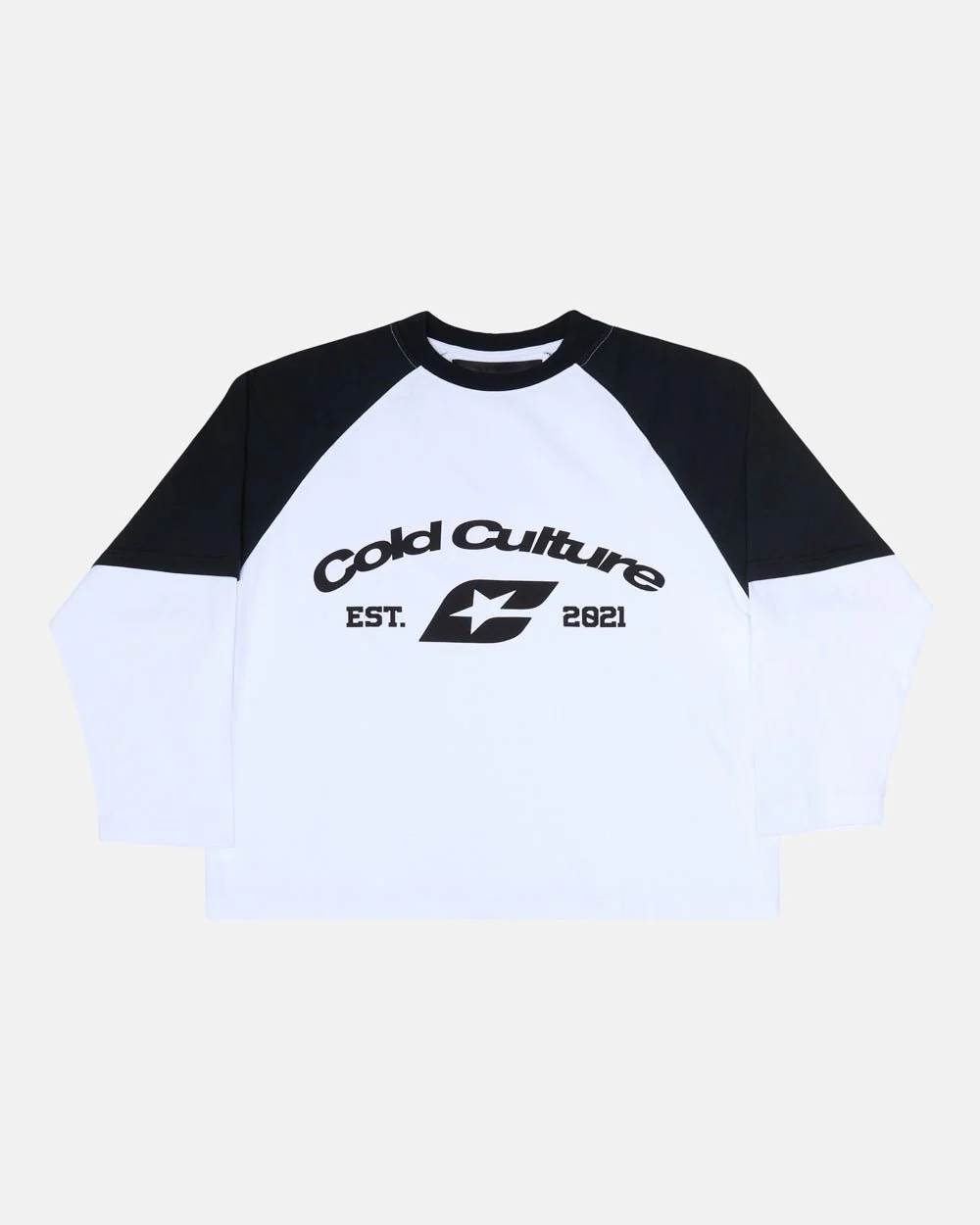Fashion
American Designers are Leading the Eco-Friendly Movement

Sustainable fashion has emerged as a crucial aspect of the global fashion industry. As environmental concerns become more pressing, designers and consumers alike are seeking ways to reduce the environmental impact of clothing production and consumption. In the United States, several designers are at the forefront of this movement, championing eco-friendly practices and innovative approaches to sustainability. This article explores how American designers are leading the charge in sustainable fashion, examining their methods, successes, and challenges.
The Importance of Sustainable Fashion

Image by : Yandex
Environmental Impact
The fashion industry is one of the largest polluters in the world. Traditional clothing production processes involve significant water consumption, chemical use, and waste generation. By adopting sustainable practices, designers aim to mitigate these environmental impacts. Sustainable fashion prioritizes the use of organic materials, recycled fabrics, and eco-friendly dyes, significantly reducing the ecological footprint of garment production.
Social Responsibility
Sustainable fashion also encompasses social responsibility. This includes ensuring fair labor practices, safe working conditions, and equitable wages for workers. American designers are increasingly recognizing the importance of these aspects and are implementing practices that promote social justice within their supply chains.
American Designers Leading the Way
Stella McCartney
Although British by nationality, Stella McCartney’s influence in the American market is profound. She is known for her staunch commitment to sustainable fashion. McCartney uses organic cotton, recycled nylon, and eco-friendly materials in her collections. Her brand is a testament to the feasibility and desirability of luxury sustainable fashion.
Eileen Fisher
Eileen Fisher is a pioneer in sustainable fashion in the United States. Her brand emphasizes simplicity, timeless design, and environmental consciousness. Fisher’s commitment to sustainability is evident in her use of organic fibers, natural dyes, and a robust take-back program that encourages customers to return worn garments for recycling and repurposing.
Patagonia
Patagonia is a standout example of sustainability in the outdoor apparel sector. The company is dedicated to environmental activism, using recycled materials extensively in their products. Patagonia’s Worn Wear program promotes the reuse and repair of clothing, significantly extending the lifecycle of their products and reducing waste.
Innovative Sustainable Practices
Recycled and Upcycled Materials
Many American designers are incorporating recycled and upcycled materials into their collections. This practice not only reduces waste but also decreases the demand for virgin materials. Brands like Reformation and Everlane are leading examples of companies that prioritize the use of recycled fabrics and materials.
Eco-Friendly Dyeing Techniques
Traditional dyeing processes are highly polluting, often involving toxic chemicals. Designers are now turning to eco-friendly dyeing techniques, such as using plant-based dyes or waterless dyeing processes. These methods significantly reduce the environmental impact of garment production.
Circular Fashion
The concept of circular fashion is gaining traction among American designers. This approach involves designing products with their entire lifecycle in mind, ensuring that garments can be easily recycled or composted at the end of their use. Brands like For Days and Cuyana are embracing circular fashion principles, creating products that minimize waste and encourage recycling.
Challenges in Sustainable Fashion
Cost and Accessibility
One of the primary challenges in sustainable fashion is the higher cost associated with eco-friendly materials and ethical production practices. This often makes sustainable fashion less accessible to a broader audience. Designers and brands must balance the need for affordability with their commitment to sustainability.
Consumer Awareness
Increasing consumer awareness about the importance of sustainable fashion is another significant challenge. Many consumers are still unaware of the environmental and social impacts of their clothing choices. Education and marketing efforts are crucial to shift consumer behavior towards more sustainable options.
Scalability
Scaling sustainable practices to meet the demands of the global fashion market is a complex task. Ensuring that sustainable practices are maintained throughout the supply chain requires significant investment and coordination. This challenge is particularly pronounced for smaller, emerging designers who may lack the resources of larger brands.
Analysis of Sustainable Fashion Practices
| Sustainable Practice | Description | Benefits | Examples of Brands |
|---|---|---|---|
| Use of Organic Materials | Using materials grown without synthetic pesticides or fertilizers | Reduces environmental impact, promotes soil health | Stella McCartney, Eileen Fisher |
| Recycled Fabrics | Incorporating fabrics made from recycled materials | Reduces waste, lowers demand for virgin resources | Patagonia, Reformation |
| Eco-Friendly Dyeing Techniques | Using dyes that are non-toxic and require less water | Minimizes water pollution, reduces chemical usage | Everlane, Alternative Apparel |
| Circular Fashion | Designing products for easy recycling or composting | Reduces waste, promotes resource efficiency | For Days, Cuyana |
| Ethical Labor Practices | Ensuring fair wages and safe working conditions | Promotes social justice, improves worker livelihoods | Eileen Fisher, Patagonia |
| Take-Back Programs | Encouraging customers to return used garments for recycling or repurposing | Extends product lifecycle, reduces landfill waste | Eileen Fisher, Patagonia |
Comparative Table: Traditional vs. Sustainable Fashion
| Aspect | Traditional Fashion | Sustainable Fashion |
|---|---|---|
| Material Use | Predominantly synthetic and non-renewable | Organic, recycled, and upcycled materials |
| Production Process | High water and chemical usage | Eco-friendly dyeing and production methods |
| Environmental Impact | Significant pollution and waste generation | Reduced ecological footprint |
| Labor Practices | Often exploitative, poor working conditions | Fair wages, safe and ethical conditions |
| Product Lifecycle | Short, fast fashion model | Extended, emphasis on reuse and recycling |
| Consumer Awareness | Low emphasis on sustainability | High emphasis on sustainability |
| Cost | Generally lower due to mass production | Often higher due to ethical practices |
Conclusion
American designers are playing a pivotal role in advancing sustainable fashion. Through the use of eco-friendly materials, innovative production techniques, and a commitment to ethical labor practices, these designers are setting new standards for the industry. However, challenges such as cost, consumer awareness, and scalability remain. Overcoming these obstacles will require continued innovation, education, and collaboration across the fashion industry. As the movement towards sustainable fashion grows, it has the potential to transform not only how we produce and consume clothing but also how we think about our impact on the planet.
Fashion
The Rise of the Cold Culture Jacket: A New Era of Warmth

Introduction
When temperatures drop and winter winds cut through even the thickest layers, one piece of clothing stands out as both a practical essential and a cultural statement: the Cold Culture Jacket. In recent years, this jacket has become more than a wardrobe staple—it has evolved into a symbol of resilience, personality, and modern streetwear fusion. Whether you’re braving icy mornings, exploring snowy landscapes, or simply searching for a statement piece that reflects your style, the Cold Culture Jacket blends innovation with fashion in a way few outerwear items can.
A Jacket That Redefines Winter Wear
The concept behind the Cold Culture Jacket is built on blending functionality with aesthetics. Traditional winter wear often leans too heavily in one direction—either too bulky to be stylish or too fashionable to actually keep you warm. This jacket disrupts that pattern by offering an ideal balance between comfort, warmth, and contemporary design.
Crafted with advanced insulating materials, intelligent ventilation systems, and ergonomic tailoring, the Cold Culture Jacket focuses on solving real winter challenges. The outer shell is often weather-resistant, making it capable of standing up to snow, sleet, and icy rain. Meanwhile, the inner lining traps warmth without creating unnecessary weight, giving wearers the freedom to move comfortably through the day.
This balance is what sets the Cold Culture Jacket apart and positions it as a new essential for anyone who lives—or travels to—a cold climate.
Why the Cold Culture Jacket Is Dominating Today’s Fashion Trends
A major reason behind the jacket’s rising popularity is its ability to fit into multiple fashion categories at once. It is as functional as a performance jacket yet as stylish as premium streetwear. This versatility helps it connect with different audiences, from urban fashion lovers to outdoor adventurers.
1. Streetwear Influence
The rise of streetwear culture has opened the doors for practical, oversized, and bold outerwear. The Cold Culture Jacket aligns perfectly with this movement through its clean lines, structured silhouettes, and statement-making presence. Many wearers treat the jacket as a centerpiece of their winter outfits, pairing it with hoodies, joggers, or layered tees.
2. Minimalist Design, Maximum Impact
While some jackets rely heavily on patterns or flashy details, the Cold Culture Jacket often leans toward minimalism. Its strength lies in simplicity—sharp cuts, monochrome or muted colors, and subtle branding. This minimal approach makes the jacket timeless, ensuring that it doesn’t fade out with ever-changing fashion trends.
3. High-Tech Materials for Modern Living
Winter weather is becoming more unpredictable, which increases the demand for outerwear capable of adapting to both extreme temperatures and everyday comfort. Many Cold Culture Jackets feature warming technologies such as down alternatives, wind-blocking membranes, and moisture-wicking fabrics. These upgrades make it not only stylish but also truly functional in unpredictable climates.
4. Eco-Conscious Innovation
In the age of sustainable fashion, consumers are more aware of their environmental impact. Some Cold Culture Jacket designs incorporate recycled fabrics, cruelty-free insulation, and eco-friendly manufacturing processes. This sustainability angle adds to the jacket’s appeal, attracting environmentally conscious buyers.
How the Cold Culture Jacket Enhances Personal Style
One of the strongest aspects of the Cold Culture Jacket is its adaptability. It sharpens the appearance of casual outfits, elevates athleisure combinations, and adds a sophisticated layer to smart-casual wear. Its structured form enhances posture and creates a polished silhouette regardless of the rest of the outfit.
Here are a few ways it amplifies personal style:
1. Layering Made Effortless
The jacket is spacious enough to pair with chunky knits, thermal tops, or hoodies without feeling tight. This makes it ideal for creating layered winter looks that are both warm and stylish.
2. Works for Different Occasions
From daily commutes to winter travel, from coffee outings to casual office environments, the Cold Culture Jacket flows seamlessly with various settings. It’s not limited to one specific look, which makes it an investment-worthy piece.
3. Statement Through Subtlety
Even without loud prints or flashy logos, the Cold Culture Jacket commands attention. Its minimalist structure makes a statement through sophistication rather than exaggeration, which appeals to both understated dressers and trend-forward fashion lovers.
Comfort and Warmth Without Compromise
The hallmark of a true winter essential is its ability to keep you warm without restricting movement. The Cold Culture Jacket is engineered to provide incredible insulation while remaining surprisingly lightweight. Features like adjustable cuffs, insulated hoods, fleece-lined pockets, and windproof zippers all contribute to unmatched comfort.
Additionally, the breathability factor prevents overheating—a common issue with older winter coats. This makes it ideal for those who move between indoor and outdoor environments frequently.
A Cultural Movement in Outerwear
Beyond fashion, the Cold Culture Jacket symbolizes a broader lifestyle shift. It represents readiness for adventure, determination in harsh environments, and a modern approach to self-expression. People aren’t just dressing for warmth anymore—they’re dressing for identity.
Winter clothing used to be merely functional. Today, it is cultural. The Cold Culture Jacket stands at the intersection of that transformation, serving as a canvas for personal style and a badge of winter-ready confidence.
Final Thoughts: The Must-Have Jacket for Modern Winters
In a world where versatility, sustainability, and individuality hold more value than ever, the Cold Culture Jacket earns its growing reputation. It is warm enough to handle severe cold, stylish enough to elevate any outfit, and durable enough to last through many winters.
If you’re looking for outerwear that represents both comfort and culture, this jacket isn’t just an option it’s an essential. As cold seasons become more demanding and fashion trends more fluid, the Cold Culture Jacket proves that you don’t have to choose between practicality and style. You can have both, wrapped into one powerful winter statement.
Fashion
Cold Culture Sweatshirt: Style, Comfort, Identity

Introduction
In today’s rapidly evolving fashion landscape, comfort and culture-driven design are more influential than ever. Among the many wardrobe staples making a big impact, the cold culture sweatshirt has risen to the top as a symbol of effortless style and modern identity. More than just a piece of clothing, it has become an expression of personal values, aesthetic preferences, and the blend of streetwear with everyday comfort.
Whether you’re layering for the chilly season, upgrading your casual wear, or showcasing a minimalist yet bold look, the cold culture sweatshirt offers a unique blend of utility and personality. Let’s dive into what makes this garment a standout essential in wardrobes across the globe.
A New Wave of Fashion: What “Cold Culture” Represents
The term “cold culture” is more than a catchy label it reflects a mindset. It represents styles inspired by cool tones, clean designs, minimalism, and the calm confidence embodied in modern streetwear. The cold culture sweatshirt draws from these inspirations, offering a look that is sleek, contemporary, and rooted in simplicity.
This type of sweatshirt fits naturally into a world where fashion is becoming more relaxed, versatile, and expressive. People want clothing that speaks for them without being loud, and that’s exactly what this style delivers. The neutral palettes, subtle graphics, and refined textures communicate a confident yet understated vibe the kind of aesthetic that never tries too hard but always looks put together.
Comfort Meets Craftsmanship
One of the largest reasons behind the rising popularity of the cold culture sweatshirt is the remarkable comfort it offers. Unlike fast-fashion pieces made purely for trend, these sweatshirts emphasize quality fabrics and thoughtful construction. Soft fleece interiors, mid-weight cotton blends, and premium stitching allow wearers to feel warm and comfortable without compromising style.
This perfect balance of warmth and breathability makes it ideal for a range of environments from brisk outdoor walks to relaxed weekends at home. Many designs also include features like drop shoulders, oversized fits, or ribbed cuffs that enhance both comfort and silhouette.
In a world where people are working from home more often and choosing relaxed attire for everyday life, a sweatshirt that delivers comfort with intention is naturally going to stand out.
Aesthetic Versatility for Every Wardrobe
The beauty of the cold culture sweatshirt lies in its adaptability. It doesn’t try to dominate an outfit instead, it elevates whatever it’s paired with. This versatility makes it easy to integrate into different styles, whether you’re going for a streetwear edge, a minimalist look, or a casual athleisure vibe.
Here are a few ways fashion lovers are styling it today:
- Streetwear Casual: Pair it with joggers, a clean pair of sneakers, and a beanie to achieve an effortless urban vibe.
- Layered Minimalism: Combine it with a long coat, slim-fit jeans, and neutral-toned accessories.
- Sporty Everyday: Match it with performance leggings or athletic shorts for a laid-back, ready-to-move outfit.
- Smart Casual Fusion: Tuck it slightly into tailored pants with boots for a modern, elevated take on casualwear.
Because of its neutral tones and sleek design, it fits seamlessly into both bold outfits and simplistic aesthetics. No matter your personal style, a cold culture sweatshirt feels like a natural extension of your wardrobe.
Why It Stands Out in the Streetwear Market
The streetwear market is more competitive than ever, but this particular type of sweatshirt stands apart because it focuses on subtlety and craftsmanship rather than loud logos or oversized graphics. Streetwear has matured, and fashion enthusiasts now gravitate toward pieces that show personality through quality rather than overbranding.
Additionally, the cold culture sweatshirt appeals to those who value timeless fashion. Instead of being tied to one seasonal trend, it represents longevity a piece you can wear year after year without it feeling outdated. Its blend of modern minimalism and comfort-focused construction makes it a long-term wardrobe investment rather than a fleeting purchase.
A Symbol of Confidence and Identity
Clothing has always been tied to identity, and the cold culture sweatshirt is no different. It communicates calm confidence, intentional style choices, and a desire for clothing that feels as good as it looks. People choose this style to reflect their appreciation for simplicity, their connection to culture-driven design, and their desire for comfort that doesn’t compromise aesthetics.
It also represents a universal vibe one that resonates with creatives, professionals, students, and trendsetters alike. Its understated presence allows individuals to express themselves authentically without dressing loudly.
Sustainability & Slow Fashion Influence
In recent years, more fashion consumers have become drawn to sustainable and slow-fashion choices. Many designers behind the cold culture sweatshirt prioritize ethical production, high-quality fabrics, and long-lasting construction an intentional move away from disposable clothing.
The minimal designs also contribute to sustainability, as simple, timeless aesthetics stay relevant much longer than trend-driven prints. A well-made sweatshirt can last for years, reducing waste and encouraging a more mindful approach to fashion.
A Wardrobe Essential for Every Season
Although the name evokes colder weather, the cold culture sweatshirt is suitable for year-round wear. During winter, it becomes a core layering piece. In fall and spring, it stands strong on its own. Even during cool summer nights, it’s the perfect choice for throwing over a t-shirt without feeling too heavy.
Its adaptability across climates and seasons strengthens its position as a must-have garment. No matter where you live or what your daily routine looks like, it delivers consistency, warmth, and effortless style throughout the year.
Final Thoughts: Why You Need One
The cold culture sweatshirt is more than a trend it’s a new staple. It captures everything today’s fashion lovers appreciate: comfort, modern design, sustainability, and identity. Whether you’re seeking a refined streetwear piece, a cozy essential, or a versatile garment that can be styled endlessly, this sweatshirt delivers.
Fashion
Cold Culture Sweatpants: Comfort and Streetwear Trend

Introduction
In the ever-evolving world of streetwear, one trend continues to dominate closets, runways, and social feeds: cold culture sweatpants. What was once a simple piece of loungewear has transformed into a cultural statement—an essential fusion of comfort, attitude, and modern aesthetics. Today’s consumers want more than clothing; they want identity. And in many ways, cold culture sweatpants represent exactly that.
From their relaxed silhouettes to their clean yet bold styling, these sweatpants define a lifestyle that values coziness as much as confidence. Below, we explore how they became a fashion staple, why they stand apart, and what makes them a must-have in the current era of style.
A New Era of Comfort Meets Street Influence
Comfort has always been at the center of sweatpants, but cold culture sweatpants elevate this idea with a sense of intentional design. Unlike traditional joggers, they’re crafted not just for lounging but for everyday wear, movement, and expression. The rise of work-from-home culture and the blending of casual and upscale fashion opened the door for this shift.
The charm of these sweatpants lies in their ability to merge softness, practicality, and street attitude into a single piece of clothing. They’re stylish enough for a café meetup, durable enough for a long day out, and comfortable enough for a cozy night in. This balance is the reason they’ve become a go-to choice for fashion-driven individuals.
Why Cold Culture Sweatpants Stand Out
1. Premium Fabrics That Last
One of the defining elements of cold culture sweatpants is the attention to fabric quality. These pieces often feature heavyweight cotton blends, brushed fleece interiors, and durable stitching that maintains shape over time. The material isn’t just soft—it’s built to withstand everyday wear while still feeling luxurious.
2. Minimalist Yet Impactful Design
The best streetwear doesn’t scream; it speaks. Cold culture sweatpants follow this philosophy by embracing minimal branding, neutral tones, and clean silhouettes. This allows wearers to style them effortlessly while still making a statement. The simplicity is intentional and powerful.
3. Versatility for Any Setting
Whether paired with an oversized hoodie, a cropped top, a graphic tee, or even a structured jacket, these sweatpants adapt to nearly any outfit. Their versatility is what makes them a staple in both casual and slightly elevated looks. Fashion lovers appreciate pieces that travel effortlessly between different styles and moods.
The Cultural Impact Behind the Trend
Streetwear has always been tied to identity music, art, skate culture, sports, and youth rebellion. Cold culture sweatpants represent a modern chapter of that story. They reflect the current wave of street style where authenticity, comfort, and self-expression matter above all.
Influencers, creatives, and athletes have embraced these sweatpants not because they’re trendy, but because they align with a lifestyle centered on freedom and individuality. When someone pulls on a pair, they’re not just choosing clothing—they’re stepping into a community that values originality.
The Perfect Fit: What Buyers Look For
To understand the appeal of cold culture sweatpants, it’s important to examine how they fit into modern fashion expectations. Today’s buyers look for:
- A relaxed yet structured fit: Not too baggy, not too tight just the right blend that enhances movement while still looking sharp.
- High-quality waistbands and cuffs: Elastic waistbands that don’t roll, drawstrings that don’t fray, and cuffs that maintain shape make all the difference.
- Functional details: Deep pockets, clean seams, and reinforced stitching elevate the experience from simple sweatpants to a premium wardrobe essential.
- A flattering silhouette: The tapered leg design found in many cold culture variations offers a polished look without sacrificing comfort.
These details make the difference between ordinary sweatpants and ones that feel like a lifestyle upgrade.
How to Style Cold Culture Sweatpants
Even though they’ve become a fashion staple, many people still ask: how do I style them without looking too casual? Thankfully, their versatility makes it easy. Here are some effortless ways to elevate your look:
- Street Casual: Pair your cold culture sweatpants with a boxy graphic tee and sneakers. Add a cap or crossbody bag for a classic streetwear vibe.
- Athleisure Chic: Combine them with a fitted tank, cropped hoodie, and athletic shoes—perfect for a gym day or a laid-back errand run.
- Minimalist Everyday Look: Wear a neutral oversized sweatshirt or crewneck for a clean, modern aesthetic. The simplicity speaks for itself.
- Elevated Urban Fit: Match your sweatpants with a structured jacket or bomber and a pair of clean kicks. This creates a bold contrast between casual and refined styles.
Why They Continue to Dominate Fashion Trends
The fashion landscape today is deeply influenced by lifestyle shifts. People care about how their clothes feel as much as how they look. The rise of hybrid work environments and the growing appreciation for minimalism have pushed comfort-driven pieces into the spotlight.
Cold culture sweatpants offer an answer to this new demand: clothing that adapts to your life instead of confining it. They give you the confidence to move freely and the style to stand out without trying too hard.
The Future of Cold Culture Sweatpants
As streetwear continues to evolve, sweatpants—particularly those with a cold culture aesthetic—are expected to grow even more popular. Their enduring appeal comes from their fusion of form and function. They aren’t just a passing trend; they’re becoming a permanent part of modern fashion.
With innovations in fabric technology, new silhouettes, and expanding cultural influence, these sweatpants will remain a core staple for years to come. Whether you’re a streetwear enthusiast, a comfort lover, or someone who simply appreciates high-quality wardrobe essentials, this is one trend that deserves a spot in your closet.
Final Thoughts
Cold culture sweatpants are more than just bottoms—they’re a statement of who we are in today’s world. They represent comfort, confidence, and a culture where authenticity is celebrated. With their premium materials, versatile designs, and effortless appeal, it’s no surprise they’ve become a global favorite.
-
Business2 years ago
Cybersecurity Consulting Company SequelNet Provides Critical IT Support Services to Medical Billing Firm, Medical Optimum
-
Business2 years ago
Team Communication Software Transforms Operations at Finance Innovate
-
Business3 years ago
Project Management Tool Transforms Long Island Business
-
Business2 years ago
How Alleviate Poverty Utilized IPPBX’s All-in-One Solution to Transform Lives in New York City
-
health3 years ago
Breast Cancer: The Imperative Role of Mammograms in Screening and Early Detection
-
Sports3 years ago
Unstoppable Collaboration: D.C.’s Citi Open and Silicon Valley Classic Unite to Propel Women’s Tennis to New Heights
-
Art /Entertainment3 years ago
Embracing Renewal: Sizdabedar Celebrations Unite Iranians in New York’s Eisenhower Park
-
Finance3 years ago
The Benefits of Starting a Side Hustle for Financial Freedom































